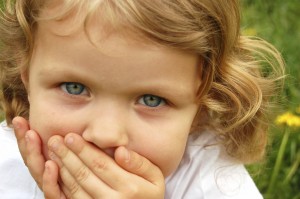
Etiology, course, and treatment of anxiety disorders
Los trastornos de ansiedad son la categoría más frecuente de problemas de salud mental en la población general, y afectan colectivamente a casi 1 de cada 5 personas en un año determinado y 1 de cada 4 durante toda la vida. Estos problemas suelen aparecer durante la infancia y se asocian con graves deficiencias en el funcionamiento académico, el ámbito escolar y familiar, y relaciones con de padres. Cuando no se tratan, los trastornos de ansiedad pueden persistir hasta la edad adulta,  durante los cuales se asocian con la presencia de otras afecciones psiquiátricas, comorbilidades físicas, uso de sustancias, pensamientos y comportamientos suicidas, y una calidad de vida general reducida relacionada con la salud.
durante los cuales se asocian con la presencia de otras afecciones psiquiátricas, comorbilidades físicas, uso de sustancias, pensamientos y comportamientos suicidas, y una calidad de vida general reducida relacionada con la salud.
El Programa MINT participa activamente en una variedad de programas de investigación financiados que trabajan para dilucidar las causas, presentaciones, cargas y tratamiento óptimo de los trastornos de ansiedad a lo largo de la vida. Con este fin, nuestra investigación investiga poblaciones comunitarias, desordenadas y de alto riesgo, adoptando una  diversidad de métodos de investigación, que van desde experimentos clínicos aleatorizados y diseños cuasiexperimentales hasta encuestas epidemiológicas representativas a nivel nacional, diseños longitudinales, metanálisis y diseños de caso único
diversidad de métodos de investigación, que van desde experimentos clínicos aleatorizados y diseños cuasiexperimentales hasta encuestas epidemiológicas representativas a nivel nacional, diseños longitudinales, metanálisis y diseños de caso único
Representative anxiety research from the MINT Program (for a full list, click aquí):
Comer, J.S., Hong, N., Poznanski, B., Silva, K., & Wilson, M. (2019). Evidence base update on the treatment of early childhood anxiety and related problems. Journal of Clinical Child and Adolescent Psychology, 48, 1-15.
Carpenter, A.L., Pincus, D.B., Furr, J.M., & Comer, J.S. (2018). Working from home: An initial pilot examination of videoconferencing-based cognitive-behavioral therapy for anxious youth delivered to the home setting. Behavior Therapy, 49, 917-930.
Albano, A.M., Comer, J.S., Compton, S.N., Piacentini, J., Kendall, P.C., Birmaher, B., Walkup, J.T., Ginsburg, G.S., Rynn, M.A., McCracken, J., Keeton, C., Sakolsky, D.J., & Sherrill, J.T. (2018). Secondary outcomes from the Child/Adolescent Anxiety Multimodal Study (CAMS): Implications for clinical practice. Evidence-Based Practice in Child and Adolescent Mental Health, 3, 30-41.
Cornacchio, D., Sanchez, A.L., Roy, A.K., Pincus, D.B., Read, K.L., Holaway, R.M., Kendall, P.C., & Comer, J.S. (2018). Factor structure of the Intolerance of Uncertainty Scale for Children. Journal of Anxiety Disorders, 53, 100-107.
Duperrouzel, J., Hawes, S., Lopez-Quintero, C., Pacheco-Colon, I., Comer, J.S., & Gonzalez, R. (2018). The association between adolescent cannabis use and anxiety: A parallel process analysis. Addictive Behaviors, 78, 107-113.
Poznanski, B., Cornacchio, D., Coxe, S., Pincus, D.B., McMakin, D.L., & Comer, J.S. (2018). The link between anxiety severity and irritability among anxious youth: Evaluating the mediating role of sleep problems. Child Psychiatry and Human Development, 49, 352-359.
Bry, L.J., Chou, T., Miguel, E., & Comer, J.S. (2018). Consumer smartphone apps marketed for child and adolescent anxiety: A systematic review and content analysis. Behavior Therapy, 49, 249-261.
Feinberg, L., Kerns, C., Pincus, D.B., & Comer, J.S. (2018). A preliminary examination of the link between maternal experiential avoidance and parental accommodation in anxious and non-anxious children. Child Psychiatry and Human Development, 49, 652-658.

Comer, J.S., Furr, J.M., Kerns, C.E., Miguel, E., Coxe, S., Elkins, R.M., Carpenter, A.L., Cornacchio, D., Cooper-Vince, C.E., DeSerisy, M., Chou, T., Sanchez, A.L., Khanna, M., Franklin, M.E., Garcia, A.M., & Freeman, J.B. (2017). Internet-delivered, family-based treatment for early-onset OCD: A pilot randomized trial. Journal of Consulting and Clinical Psychology.
Cornacchio, D., Crum, K.I., Coxe, S., Pincus, D.B., & Comer, J.S. (2016). Irritability and severity of anxious symptomatology among youth with anxiety disorders. Journal of the American Academy of Child and Adolescent Psychiatry, 55, 54-61.
Sanchez, A.L., Kendall, P.C., & Comer, J.S. (2016). Evaluating the intergenerational link between maternal and child intolerance of uncertainty: A preliminary cross-sectional examination. Cognitive Therapy and Research, 40, 532-539.
Cooper-Vince, C., Chou, T., Furr, J.M., Puliafico, A.C., & Comer, J.S. (2016). Videoteleconferencing early child anxiety treatment: A case study of the Internet-delivered CALM (I-CALM) Program. Evidence-Based Practice in Child and Adolescent Mental Health, 1, 24-39.
Peterman, J.S., Carper, M.M., Elkins, R.M., Comer, J.S., Pincus, D.B., & Kendall, P.C. (2016). The effects of cognitive behavioral therapy for youth anxiety on sleep problems. Journal of Anxiety Disorders, 37, 78-88.
Cornacchio, D., Chou, T., Sacks, H., Pincus, D.B., & Comer, J.S. (2015). Clinical consequences of the revised DSM-5 definition of agoraphobia in treatment-seeking anxious youth. Depression and Anxiety, 7, 502-508.
Weiner, C.L., Elkins, R.M., Pincus, D.B., & Comer, J.S. (2015). Anxiety sensitivity and sleep-related problems in anxious youth. Journal of Anxiety Disorders, 32, 66-72.
Comer, J.S., & Barlow, D.H. (2014). The occasional case against broad dissemination and implementation: Retaining a role for specialty care in the delivery of psychological treatments. American Psychologist, 69, 1-18.
Comer, J.S., Furr, J.M., Cooper-Vince, C., Kerns, C., Chan, P.T., Edson, A.L., Khanna, M., Franklin, M.E., Garcia, A.M., & Freeman, J.B. (2014). Internet-delivered, family-based treatment for early-onset OCD: A preliminary case series. Journal of Clinical Child and Adolescent Psychology, 43, 74-87 .
Cooper-Vince, C., Emmert-Aronson, B., Pincus, D.B., Comer, J.S. (2014). The diagnostic utility of separation anxiety disorder symptoms: An item response theory analysis. Journal of Abnormal Child Psychology, 42, 417-428.
Cooper-Vince, C., Pincus, D.B., & Comer, J.S. (2014). Maternal intrusiveness, family financial means, and anxiety across childhood in a large multiphase sample of community youth. Journal of Abnormal Child Psychology, 42, 429-438.
Elkins, R.M., Pincus, D.B., & Comer, J.S. (2014). A psychometric evaluation of the Panic Disorder Severity Scale for Children and Adolescents. Psychological Assessment, 26, 609-618.
Thompson-Hollands, J., Edson, A., Tompson, M.C., & Comer, J.S. (2014). Family involvement in the psychological treatment of obsessive-compulsive disorder: A meta-analysis. Journal of Family Psychology, 28, 287-298.

Barlow D.H., & Comer, J.S. (2013). What are the optimal treatment courses for geriatric anxiety, and how do we find out? American Journal of Psychiatry, 170, 707-711.
Gallo, K.P., Comer, J.S., & Barlow, D.H. (2013). Direct-to-consumer marketing of psychological treatments for anxiety disorders. Journal of Anxiety Disorders, 27, 793-801.
Read, K.L., Comer, J.S., & Kendall, P.C. (2013). The Intolerance of Uncertainty Scale for Children (IUSC): Discriminating principal anxiety diagnoses and severity. Psychological Assessment, 25, 722-729.
Kerns, C.E., Comer, J.S., Pincus, D.B., & Hofmann, S.G. (2013) Evaluation of the proposed social anxiety disorder specifier change for DSM-5 in a treatment-seeking sample of anxious youth. Depression and Anxiety, 30, 709-715.
Comer, J.S., Gallo, K., Korathu-Larson, P.A., Pincus, D., & Brown, T.A. (2012). Specifying child anxiety disorders not otherwise specified in the DSM-IV. Depression and Anxiety, 29, 1004-1013.
Comer, J.S., Pincus, D.P., & Hofmann, S.G. (2012). Generalized anxiety disorder and the proposed associated symptoms criterion change for DSM-5 in a treatment-seeking sample of anxious youth. Depression and Anxiety, 29, 994-1003.
Comer, J.S., Puliafico, A.C., Aschenbrand, S.G, McKnight, K., Robin, J.A., Goldfine, M., & Albano, A.M. (2012). A pilot feasibility evaluation of the CALM Program for anxiety disorders in early childhood. Journal of Anxiety Disorders, 26, 40-49.

Comer, J.S., Mojtabai, R., & Olfson, M. (2011). National trends in the antipsychotic treatment of psychiatric outpatients with anxiety disorders. American Journal of Psychiatry, 168, 1057-1065.
Comer, J.S., Blanco, C., Grant, B., Hasin, D., Liu, S.M., Turner, J.B., & Olfson, M. (2011). Health-related quality of life across the anxiety disorders: Results from the National Epidemiologic Survey on Alcohol and Related Conditions. Journal of Clinical Psychiatry, 72, 43-50.
Comer, J.S., Roy, A.K., Furr, J.M., Gotimer, K., Beidas, R.S., Dugas, M.J., & Kendall, P.C. (2009). The Intolerance of Uncertainty Scale for Children: A psychometric evaluation. Psychological Assessment, 21, 402-411.
Kendall, P.C., Comer, J.S., Marker, C.D., Creed, T.A., Puliafico, A.C., Hughes, A.A., Martin, E., Suveg, C., & Hudson, J.L. (2009). In-session exposure tasks and therapeutic alliance across the treatment of childhood anxiety disorders. Journal of Consulting and Clinical Psychology, 77, 517-525.
Comer, J.S., Furr, J.M., Beidas, R.S., Babyar, H., & Kendall, P.C. (2008). Media use and children’s perceptions of societal threat and personal vulnerability. Journal of Clinical Child and Adolescent Psychology, 37, 622-630.

Hudson, J., Comer, J.S., & Kendall, P.C. (2008). Parental responses to positive and negative emotions in anxious and non-anxious children. Journal of Clinical Child and Adolescent Psychology, 37, 1-11.
Puliafico, A.C., Comer, J.S., & Kendall, P.C. (2007). Social phobia in youth: The diagnostic utility of feared social situations. Psychological Assessment, 19, 152-158.
 Comer, J.S., & Kendall, P.C. (2005). High-end specificity of the Children’s Depression Inventory (CDI) in a sample of anxiety-disordered youth. Depression and Anxiety, 22, 11-19.
Comer, J.S., & Kendall, P.C. (2005). High-end specificity of the Children’s Depression Inventory (CDI) in a sample of anxiety-disordered youth. Depression and Anxiety, 22, 11-19.
Comer, J.S., & Kendall, P.C. (2004) A symptom-level examination of parent-child agreement in the diagnosis of anxious youths. Journal of the American Academy of Child and Adolescent Psychiatry, 43, 878-886.
Comer, J.S., Kendall, P.C., Franklin, M.E., Hudson, J.L., & Pimentel, S.S. (2004). Obsessing/worrying about the overlap between obsessive-compulsive disorder and generalized anxiety disorder in youth. Clinical Psychology Review, 24, 663-683.
 MINT
MINT

